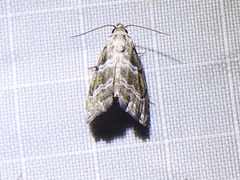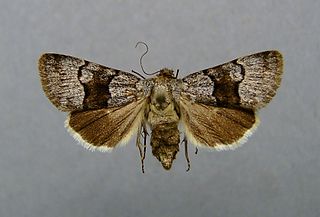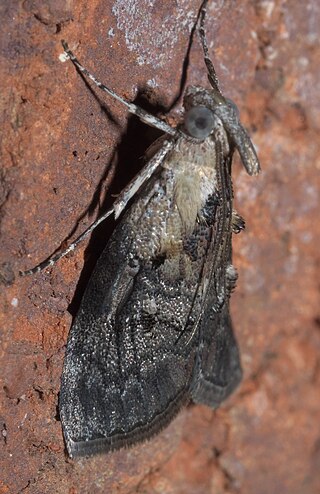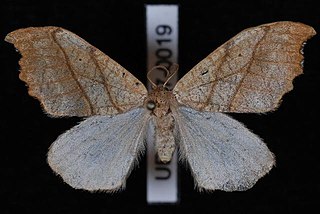
Xestia is a genus of noctuid moths. They are the type genus of the tribe Xestiini in subfamily Noctuinae, though some authors merge this tribe with the Noctuini. Species in this genus are commonly known as "clays", "darts" or "rustics", but such names are commonplace among Noctuidae. Xestia moths have a wide distribution, though they most prominently occur in the Holarctic.

Acontiinae is a subfamily of bird dropping moths in the family Noctuidae. There are more than 50 genera and 430 described species in Acontiinae, found worldwide in temperate and tropical climates.

Urodidae, whose species are commonly known as false burnet moths, is a family of moths in the lepidopteran order. It is the type genus in the superfamily, Urodoidea, with three genera, one of which, Wockia, occurs in Europe.

Amphipyrinae is a subfamily of owlet moths in the family Noctuidae. There are more than 50 genera and 210 described species in Amphipyrinae, although the classifications are likely to change over time.

Abablemma is a genus of moths in the family Erebidae. The genus was described by Nye in 1910.

Grotella is a genus of moths of the family Noctuidae first described by Leon F. Harvey in 1875.

Lithophane is a genus of moths of the family Noctuidae. They spend the winter as adults. Some species are capable of feeding on other caterpillars or on sawfly larvae, which is rather uncommon among Lepidoptera.

Phobolosia is a genus of moths in the family Erebidae. The genus was erected by Harrison Gray Dyar Jr. in 1908.

Plagiomimicus is a genus of moths of the family Noctuidae. The genus was erected by Augustus Radcliffe Grote in 1873.

Sympistis is a genus of moths of the family Noctuidae. The genus was erected by Jacob Hübner in 1823.

Tarache is a genus of moths of the family Noctuidae erected by Jacob Hübner. It includes most former New World Acontia species. Lepidoptera and Some Other Life Forms and The Global Lepidoptera Names Index report this name as a synonym of Acontia.

Pococera is a genus of snout moths in the subfamily Epipaschiinae, found mainly in North and Central America. It was described by Philipp Christoph Zeller in 1848.
Aglossa gigantalis is a species of snout moth in the genus Aglossa. It was described by William Barnes and Foster Hendrickson Benjamin in 1925 and is found in North America, including the type location of Arizona.
Anemosella nevalis is a species of snout moth in the genus Anemosella. It was described by William Barnes and Foster Hendrickson Benjamin in 1925. It is found in North America, including Nevada, California and Arizona.
Eulepidotis merricki is a moth of the family Erebidae first described by William Jacob Holland in 1902. It is found in Jamaica, Cuba, and Puerto Rico. The species was originally described after being observed in the US state of Pennsylvania, but the specimen was probably imported with tropical fruit. The species is not present in the Nearctic.

Falcaria bilineata, the two-lined hooktip moth, is a moth in the family Drepanidae. It was described by Packard in 1864. It is found in North America, where it has been recorded from Newfoundland to New Jersey, west to Oregon and north to British Columbia. The habitat consists of deciduous woodlands.
Agathymus mariae, the lechuguilla giant skipper, is a species of giant skipper in the family of butterflies known as Hesperiidae. Other common names include Mary's giant skipper and five-spot skipper. It was first described by William Barnes and Foster Hendrickson Benjamin in 1924 and it is found in Central and North America.

Lacinipolia stricta, the brown arches moth, is a species of cutworm or dart moth in the family Noctuidae. It is found in North America.
Scotogramma fervida is a species of cutworm or dart moth in the family Noctuidae first described by William Barnes and Foster Hendrickson Benjamin in 1912. It is found in North America.

Tallula is a genus of pyralid moths in the family Pyralidae. There are about 11 described species in Tallula.















